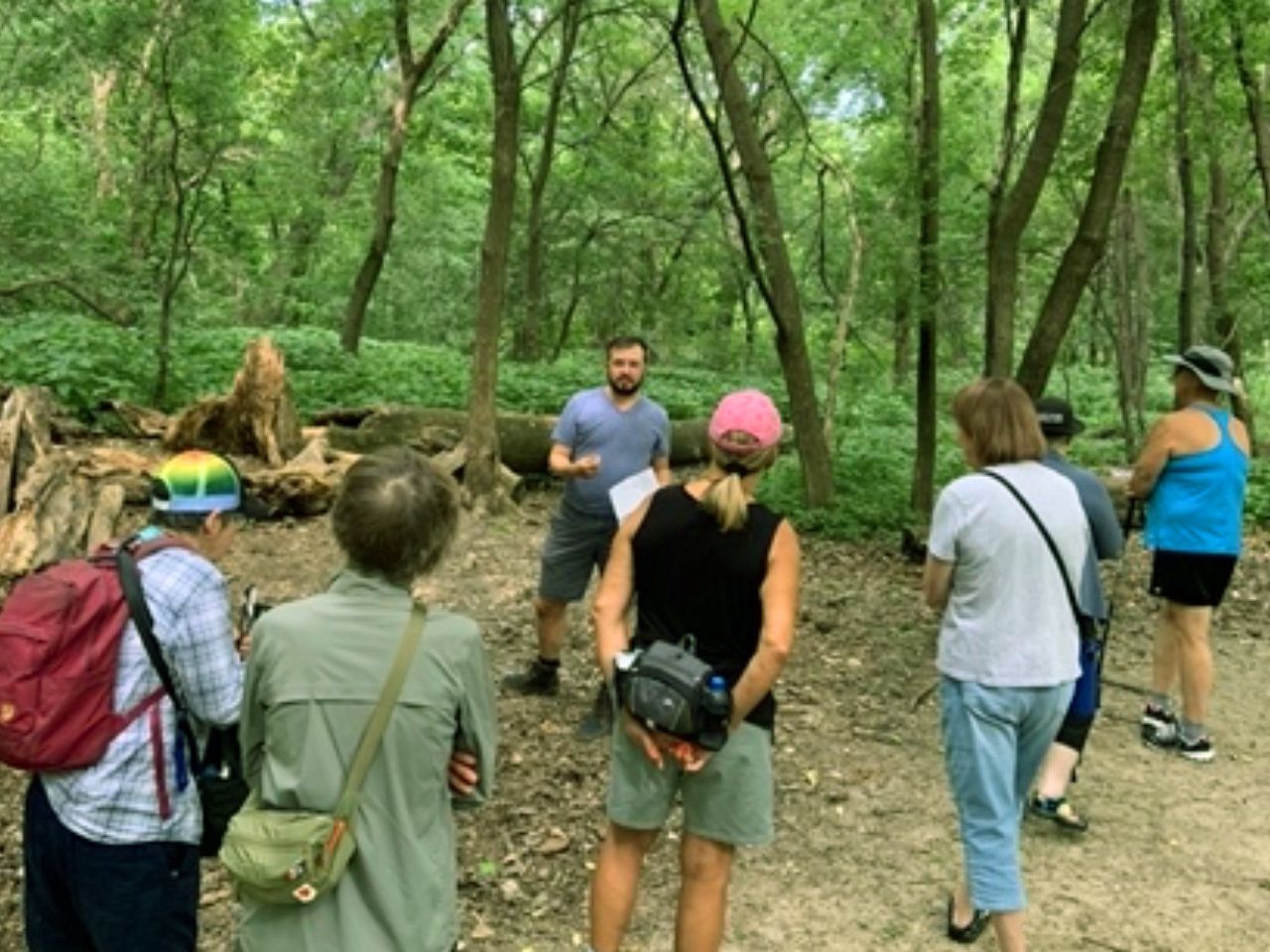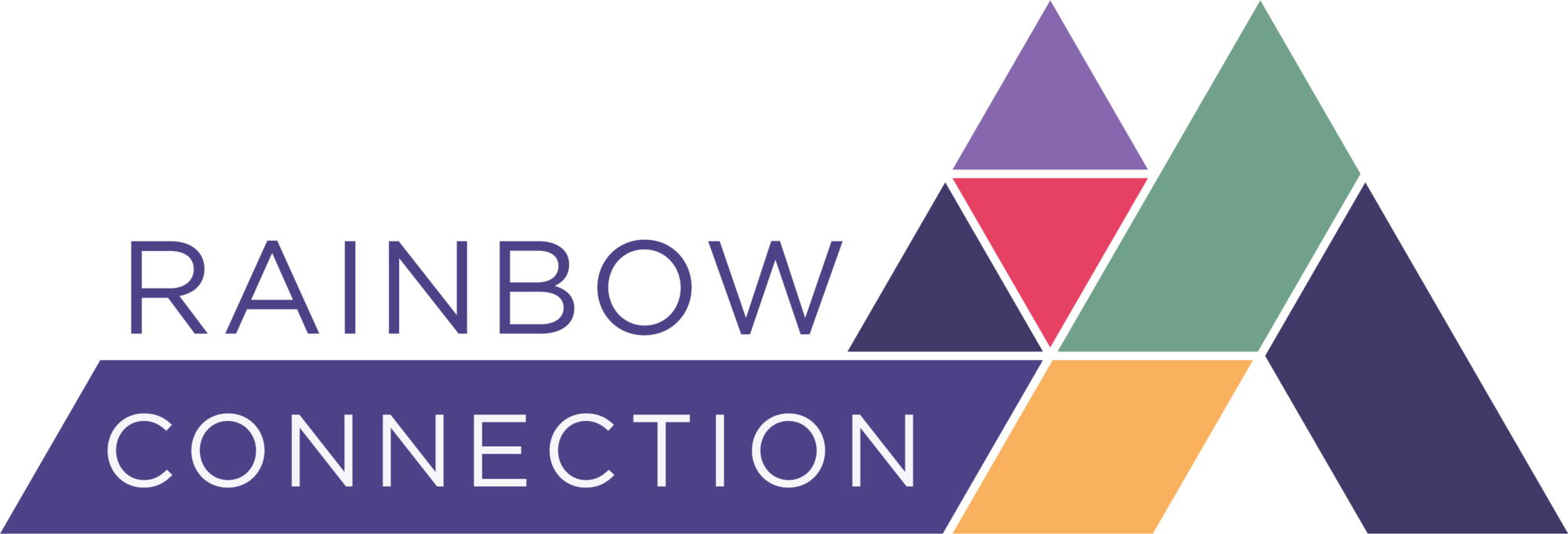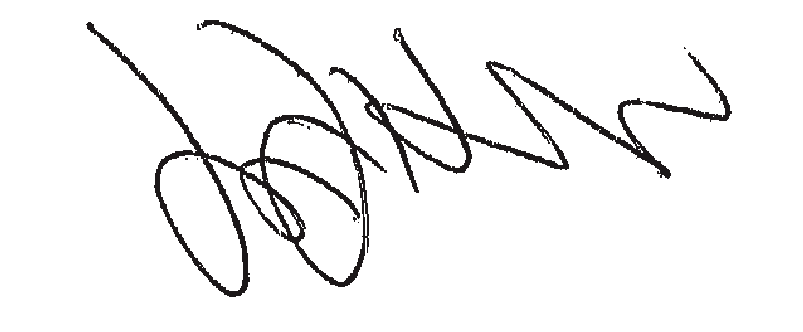Rainbow Health Agency Newsletter
Volume 1 • Issue 1 • Fall 2022 |
![[Picture] Jeremy Hanson Willis, Chief Executive Officer, Rainbow Health](https://rainbowhealth.org/wp-content/uploads/2022/09/Jeremy-Hanson-Willis-Rainbow-Health-CEO.jpg)
Jeremy Hanson WillisChief Executive Officer |
Welcome to our new quarterly newsletter designed to keep you informed of the latest news, updates and happenings at Rainbow Health. Our staff works very hard every day to create an environment that is open and compassionate for all who enter our doors seeking assistance. After all, everyone deserves respect, dignity and access to the resources they need to live their best, most authentic life.
We appreciate your support of our mission, and we want you to know on a deeper level how your support enables us to provide the valuable programs and services that change — and save — lives. We could not do any of it without the support of our community of donors, supporters, volunteers and dedicated staff. Your commitment to our mission, goals and aspirations drives us as much as our client service experiences. We hope you enjoy this quick glimpse into some of our programs and activities. There is much more happening at Rainbow Health, and I hope you look forward to each issue or reach out to learn more or ask questions. With gratitude, |
FEATURE STORY
Saving lives through better management of risky behavior
Unless you work in behavioral health, or a similar health care profession, there’s a good chance you haven’t heard the term harm reduction used to describe a treatment method aimed at reducing risky behavior as someone progresses through treatment or recovery. In truth, the practice has been around for decades, but as effective as it’s been shown to be, it hasn’t been particularly popular. That’s because rather than relying on total abstinence or cold-turkey sobriety, this method focuses on reducing risk over time. That’s not to say it excludes abstinence or sobriety if that’s a client’s goal. It simply provides alternatives.
“Rather than forcing people to ascribe to the goals of someone else, harm reduction focuses on meeting people where they are at and supporting their personal goals,” said Zarra TM, Community Health Advocate. “With substance use, sobriety or abstinence are often viewed as the only path forward, but helping people manage their use, understand their use, limit their use, or reduce the mental/physical harm of their use are all important alternatives.”
Harm reduction in practice
Though most often associated with substance use, harm reduction is a useful strategy for treatment of a variety of circumstances. For example, providing syringe exchange and prophylactics programs became an effective method of reducing transmission of HIV in the 1980s and 90s.
Zarra offers the following example of how harm reduction might be used in practice at Rainbow Health today:
“Sam is unhoused and uses meth to stay awake at night because sleeping alone, outside, is dangerous. With more fentanyl in the drug supply, they are concerned about overdosing, but they don’t want to quit using meth until they have safe housing.
“Helping Sam get safe and stable housing is the ultimate goal, but harm reduction strategies can help reduce the likelihood of overdose until, and after, that point. For example, supplying free test strips to Sam allows them to test their meth for fentanyl; providing free unused bubbles (a type of glassware for smoking) helps them from needing to inject the meth, which decreases the likelihood of overdose. Providing community education on how to use naloxone and free distribution of naloxone can help reverse an opioid overdose and support a community of care around Sam.”
It’s not a one-size-fits-all approach. It’s tailored to take into account an individual’s situation, goals and level of risk.
“It’s important to keep in mind that the implementation and how clients engage with risk reduction will look different for each individual, and there is no one correct way to approach harm reduction,” said Rachel “Raisin” Johnson, LGSW, Mental Health Care Coordinator at Rainbow Health.
Combatting overdose
With the U.S. experiencing the most significant substance use and overdose epidemic it’s ever faced, driven by a significant rise in highly potent synthetic opioids containing primarily fentanyl, harm reduction services are being used more frequently to help reduce the risk of overdose and other life-threatening outcomes. By providing education on how to make safer choices, details on potential consequences, free distribution of safe supplies, among other alternatives, Rainbow Health hopes to improve the outcomes of those affected across the community.
“Ultimately, I think the core of all harm reduction is compassion and humanity. People using substances are often treated with disgust, and the stigma around substance use is deadly.” Zarra said. “Everyone deserves a long, healthy life. Everyone deserves to be treated with respect. We wouldn’t withhold life-saving treatment for any other disease, so why are we withholding life-saving support for people living with addiction?”
To support Rainbow Health’s initiatives, donate or volunteer today.
The National Harm Reduction Coalition’s 8 Principles of Harm Reduction |
|
![[Graphic] 8 Principles of Harm Reduction #1: Accepts, for better or worse, that licit and illicit drug use is part of our world and chooses to work to minimize its harmful effects rather than simply ignore or condemn them](https://rainbowhealth.org/wp-content/uploads/2022/09/8-Principles-of-Harm-Reduction_001.png) ![[Graphic] 8 Principles of Harm Reduction #3: Establishes quality of individual and community life and well-being — not necessarily cessation of all drug use — as the criteria for successful interventions and policies](https://rainbowhealth.org/wp-content/uploads/2022/09/8-Principles-of-Harm-Reduction_003.png) ![[Graphic] 8 Principles of Harm Reduction #5: Ensures that people who use drugs and those with a history of drug use routinely have a real voice in the creation of programs and policies designed to serve them](https://rainbowhealth.org/wp-content/uploads/2022/09/8-Principles-of-Harm-Reduction_005.png) ![[Graphic] 8 Principles of Harm Reduction #7: Recognizes that the realities of poverty, class, racism, social isolation, past trauma, sex-based discrimination and other social inequalities affect both people’s vulnerability to and capacity for effectively dealing with drug-related harm](https://rainbowhealth.org/wp-content/uploads/2022/09/8-Principles-of-Harm-Reduction_007.png) |
![[Graphic] 8 Principles of Harm Reduction #2: Understands drug use as a complex, multi-faceted phenomenon that encompasses a continuum of behaviors from severe use to total abstinence, and acknowledges that some ways of using drugs are clearly safer than others](https://rainbowhealth.org/wp-content/uploads/2022/09/8-Principles-of-Harm-Reduction_002.png) ![[Graphic] 8 Principles of Harm Reduction #4: Calls for the non-judgmental, non-coercive provision of services and resources to people who use drugs and the communities in which they live to assist them in reducing attendant harm](https://rainbowhealth.org/wp-content/uploads/2022/09/8-Principles-of-Harm-Reduction_004.png) ![[Graphic] 8 Principles of Harm Reduction #6: Affirms people who use drugs (PWUD) themselves as the primary agents of reducing the harms of their drug use and seeks to empower PWUD to share information and support each other in strategies that meet their actual conditions of use](https://rainbowhealth.org/wp-content/uploads/2022/09/8-Principles-of-Harm-Reduction_006.png) ![[Graphic] 8 Principles of Harm Reduction #8: Does not attempt to minimize or ignore the real and tragic harm and danger that can be associated with illicit drug use](https://rainbowhealth.org/wp-content/uploads/2022/09/8-Principles-of-Harm-Reduction_008.png) |
| Source: harmreduction.org | |
PROGRAM HIGHLIGHTS
Celebrating 40 years of progress to end HIV
We’ve come a long way in the fight to end HIV. When Rainbow Health was founded in 1983, an HIV diagnosis was a death sentence. That’s not the case today. We now have treatment options available to help those living with HIV achieve and maintain an undetectable viral load, and we have prevention measures that reduce the risk of transmission by up to 99%.
While we still mourn our friends, family members, colleagues, clients and other loved ones who are no longer here to see and celebrate the progress, we remain hopeful that HIV will one day be completely eradicated in our community.
Here’s what 40 years of progress achieved: |
|
![[infographic] 40 years of progress to end HIV: 6 months to reach an undetectable viral load](https://rainbowhealth.org/wp-content/uploads/2022/09/40-years-of-progress_6-months-to-reach-an-undetectable-viral-load.png)
According to hiv.gov, nearly everyone who takes HIV medication as prescribed can reach an undetectable viral load, usually within six months after starting treatment.
|
![[infographic] 40 years of progress to end HIV: 99% reduction in risk of transmission from sex with PrEP](https://rainbowhealth.org/wp-content/uploads/2022/09/40-years-of-progress_99-percent-reduction-in-risk-of-transmission-from-sex-with-PrEP.png)
Currently, there are two FDA-approved daily oral medications for pre-exposure prophylaxis (PrEP). A long-acting injectable form of PrEP was also recently approved by the FDA.
|
![[infographic] 40 years of progress to end HIV: 20 minutes to know](https://rainbowhealth.org/wp-content/uploads/2022/09/40-years-of-progress_20-minutes-to-know.png)
A Rapid Self-Test, available at most pharmacies or online, is done entirely at home or in a private location and can produce results in 20 minutes.
|
![[infographic] 40 years of progress to end HIV: 72-hour emergency treatment](https://rainbowhealth.org/wp-content/uploads/2022/09/40-years-of-progress_72-hour-emergency-treatment.png)
PEP, or post-exposure prophylaxis, is a short course of HIV medicines taken within 72 hours after a potential exposure to prevent an HIV infection.
|
Let’s keep the progress going.
Join us for the 34th Annual MN Walk to End HIV |
|
![[graphic] Calendar Icon](https://rainbowhealth.org/wp-content/uploads/2022/09/34th-Annual-Walk-to-End-HIV_When.png) WHEN WHENSaturday May 13, 2023 Add to calendar |
![[graphic] Location Marker Icon](https://rainbowhealth.org/wp-content/uploads/2022/09/34th-Annual-Walk-to-End-HIV_Where.png) WHERE WHEREHarriet Island Regional Park 200 Dr. Justus Ohage Blvd Saint Paul, MN 55107 |
AROUND THE AGENCY
AIDSLine
AIDSLine has had a busy PRIDEful summer and we’re looking forward to more events in the fall! We were present at all the greater Minnesota Pride Events, as well as the MUNA concert, sponsored by LIFEbeat, on August 8th, and we attended the 2022 Day of Transgender Child Celebration on August 20th. We are continuously looking for different opportunities for AIDSLine to be present throughout Minnesota. If you are aware of a community event or conference where you think AIDSLine should be present, please email Naomi Kyndberg, AIDSLine Manager, at [email protected].
AIDSLine continues to operate as Minnesota’s statewide HIV hotline information and referral service, answering your questions about HIV and connecting you with the resources and assistance you need. If you or someone you know are in need of these services, reach out to us at (612) 373-2437 or join an AIDSLine live chat right here on our website (click the purple chat icon located on the bottom right corner of your screen).
Financial Assistance
Client Success Story
“We assisted a client with rent. The client reached out to Rainbow Health saying that the landlord had not received the rent payment and was threatening eviction. Rainbow Health staff checked with the bank to see if the check had been cashed. It had. Our Financial Assistance team were able to get a copy of the cashed rent check to the client, who was able to present and prove to their landlord that they, in fact, had received the rent as they cashed the check. The landlord then credited the client with the payment and ceased eviction discussions. By providing the cashed check to the client, financial assistance was able to get the situation corrected and maintain their housing.”
Rainbow Health can help you navigate and apply for various financial assistance programs. Learn more.
Aging Initiative
 |
(pictured) LGBTQ 50+ Forest Bathing Experience at Wood Lake Nature Center led by Master Naturalist, Dylan Flunker.
Rainbow Health envisions a community that fully supports its older adults, including LGBTQ+ elders and those aging with HIV, with a range of services, support and policies that allow them to age with dignity, independence and access to the quality care they seek and deserve. Learn more. |
Peer Support: HERR Day Out
The women of HERR Day Out had a great summer! They saw Temptations: Ain’t too Proud to Beg at the Orpheum Theater, went blueberry and raspberry picking at the Berry Patch and volunteered as crew on the 3-day Red Ribbon Ride. They also had an intense and motivating discussion on the repeal of Roe v. Wade and made posters for the protest this summer at the capitol.
HERR Day Out is a Health Education/Risk Reduction (HERR) support group for women living with HIV that increases emotional well-being by providing a safe place to share the experience of living with HIV. Learn more.
Chemical Health
We continue to serve clients living with HIV and usually can help a client the same day or within 24 hours.
For those who are exploring how substances fit into their lives and whether or not to stop using, our Chemical Health team can work with you to complete a Chemical Health Assessment that will help you and your assessor identify the best path to reach your unique chemical health goals. Learn more.
OUT & ABOUT
50th Annual Twin Cities Pride Festival
June 25-26, 2022 • Loring Park • Minneapolis, MN
![[Picture 1] Rainbow Health staff and volunteers in the booth at the 2022 Twin Cities Pride Festival. Over 500 people visited our booth where they were greeted with an opportunity to win raffle prizes, fun swag items, glitter and skin care kits donated by L’Oreal!](https://rainbowhealth.org/wp-content/uploads/2022/09/TC-Pride-1.jpg) |
![[Picture 2] Rainbow Health staff and volunteers in the booth at the 2022 Twin Cities Pride Festival. Over 500 people visited our booth where they were greeted with an opportunity to win raffle prizes, fun swag items, glitter and skin care kits donated by L’Oreal!](https://rainbowhealth.org/wp-content/uploads/2022/09/TC-Pride-2.jpg) |
|
Rainbow Health staff and volunteers at the 2022 Twin Cities Pride Festival. Over 500 people visited our booth where they were greeted with an opportunity to win raffle prizes, fun swag items, glitter and skin care kits donated by L’Oreal! |
|
1st Annual Freedom BallJune 17, 2022 • Granada Theater • Minneapolis, MN |
|
![[Picture] Rainbow Health, along with Youth and AIDS Project and Red Door Clinic, hosted the 1st Annual Freedom Ball in honor and celebration of Juneteenth and to raise awareness and support for youth impacted by HIV.](https://rainbowhealth.org/wp-content/uploads/2022/09/Freedom-Ball-1a.jpg)
Rainbow Health, along with Youth and AIDS Project and Red Door Clinic, hosted the 1st Annual Freedom Ball in honor and celebration of Juneteenth and to raise awareness and support for youth impacted by HIV. |
![[Picture] Legendary dancers showed off their Pan-African flag colors in an epic vogue-off in front of the judges at the 1st Annual Freedom Ball](https://rainbowhealth.org/wp-content/uploads/2022/09/Freedom-Ball-2.jpeg)
Individuals and houses competed for cash prizes in a number of categories. In the vogue performance, legendary dancers showed off their Pan-African flag colors in an epic vogue-off in front of the judges. |
FALL EVENTS
Voices of Health Survey 2022
We are currently conducting the 2022 Voices of Health survey, and we need your help! Voices of Health is the annual LGBTQ+ community health and wellness survey in Minnesota. We use this data to educate providers on LGBTQ+ health, advocate for health policies and practices that support LGBTQ+ people and more.
We need your voice to inform lasting change! Take the survey and get a $10 Amazon card.
October 2022
Rainbow Health Happy Hour: Aging in the LGBTQ+ Community
One of the fastest growing demographics within the LGBTQ+ and HIV communities is older adults. Learn more about our aging programs at this special happy hour event and help raise awareness and funds as we continue to expand LGBTQ+ Older Adult Services.
October 20, 2022, 4:30 – 6:30 pm • Learn more and RSVP.
All Gender Health 2022
Back by popular demand! Join us for a FREE, info-packed half-day of sessions focusing on the upcoming new WPATH Standards, as well as recent and anticipated developments regarding health issues facing trans/nonbinary youth, older adults and the community in general.
October 29, 2022, 9:00 am – 12:30 pm • Learn more and register.
November 2022
Give to the Max Day
Give to the Max Day 2022 will take place on Thursday, November 17! Stay tuned for more information on this year’s fundraiser.

Recurring Events
Yoga with Dallas
Every Saturday from 9:30 – 10:30 am • Learn more.
Slow Flow Yoga with Val
Every Sunday from 10:00 – 11:30 am • Learn more.


![[Logo] Rainbow Connection • Rainbow Health Newsletter](https://rainbowhealth.org/wp-content/uploads/2022/09/Rainbow-Connection-Rainbow-Health-Newsletter.png)